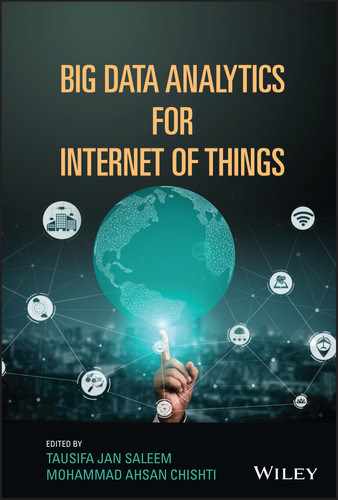BIG DATA ANALYTICS FOR INTERNET OF THINGS Discover the latest developments in IoT Big Data with a new resource from established and emerging leaders in the field Big Data Analytics for Internet of Things delivers a comprehensive overview of all aspects of big data analytics in Internet of Things (IoT) systems. The book includes discussions of the enabling technologies of IoT data analytics, types of IoT data analytics, challenges in IoT data analytics, demand for IoT data analytics, computing platforms, analytical tools, privacy, and security. The distinguished editors have included resources that address key techniques in the analysis of IoT data. The book demonstrates how to select the appropriate techniques to unearth valuable insights from IoT data and offers novel designs for IoT systems. With an abiding focus on practical strategies with concrete applications for data analysts and IoT professionals, Big Data Analytics for Internet of Things also offers readers: Perfect for professionals, industry practitioners, and researchers engaged in big data analytics related to IoT systems, Big Data Analytics for Internet of Things will also earn a place in the libraries of IoT designers and manufacturers interested in facilitating the efficient implementation of data analytics strategies.
Table of Contents
- Cover
- Title Page
- Copyright Page
- List of Contributors
- List of Abbreviations
- 1 Big Data Analytics for the Internet of Things
- 2 Data, Analytics and Interoperability Between Systems (IoT) is Incongruous with the Economics of Technology: Evolution of Porous Pareto Partition (P3)
- 2.1 Context
- 2.2 Models in the Background
- 2.3 Problem Space: Are We Asking the Correct Questions?
- 2.4 Solutions Approach: The Elusive Quest to Build Bridges Between Data and Decisions
- 2.5 Avoid This Space: The Deception Space
- 2.6 Explore the Solution Space: Necessary to Ask Questions That May Not Have Answers, Yet
- 2.7 Solution Economy: Will We Ever Get There?
- 2.8 Is This Faux Naïveté in Its Purest Distillate?
- 2.9 Reality Check: Data Fusion
- 2.10 “Double A” Perspective of Data and Tools vs. The Hypothetical Porous Pareto (80/20) Partition
- 2.11 Conundrums
- 2.12 Stigma of Partition vs. Astigmatism of Vision
- 2.13 The Illusion of Data, Delusion of Big Data, and the Absence of Intelligence in AI
- 2.14 In Service of Society
- 2.15 Data Science in Service of Society: Knowledge and Performance from PEAS
- 2.16 Temporary Conclusion
- References
- 3 Machine Learning Techniques for IoT Data Analytics
- 4 IoT Data Analytics Using Cloud Computing
- 5 Deep Learning Architectures for IoT Data Analytics
- 6 Adding Personal Touches to IoT
- 7 Smart Cities and the Internet of Things
- 8 A Roadmap for Application of IoT‐Generated Big Data in Environmental Sustainability
- 9 Application of High‐Performance Computing in Synchrophasor Data Management and Analysis for Power Grids
- 10 Intelligent Enterprise‐Level Big Data Analytics for Modeling and Management in Smart Internet of Roads
- 11 Predictive Analysis of Intelligent Sensing and Cloud‐Based Integrated Water Management System
- 12 Data Security in the Internet of Things
- 13 DDoS Attacks
- 14 Securing the Defense Data for Making Better Decisions Using Data Fusion
- 15 New Age Journalism and Big Data (Understanding Big Data and Its Influence on Journalism)
- 16 Two Decades of Big Data in Finance
- Index
- End User License Agreement
